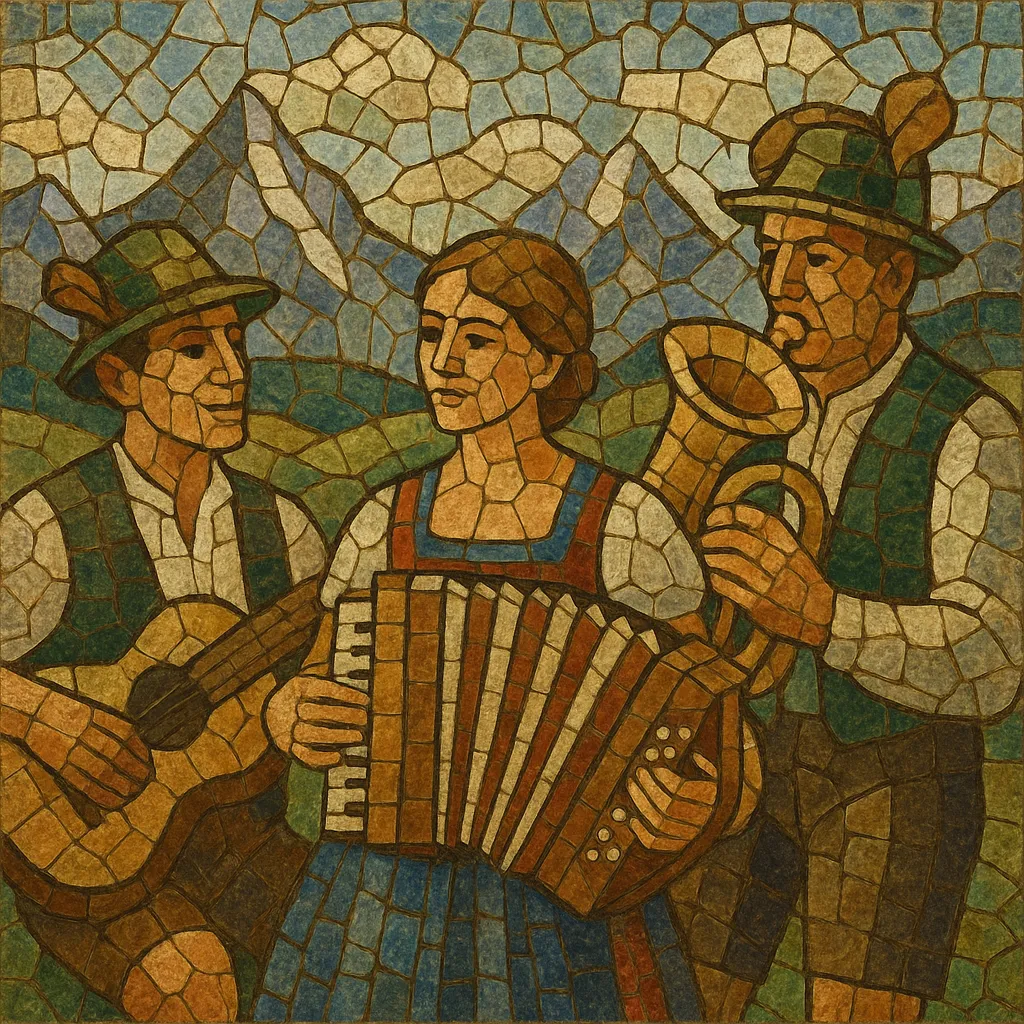Volkstümliche Musik is a commercially oriented, folk-styled popular music from the German-speaking Alpine world. It blends the melodies, dance forms, and timbres of traditional Alpine folk (Volksmusik) with the catchy hooks, polished arrangements, and song forms of Schlager and pop.
Typical hallmarks include oom-pah rhythms, bright brass and accordion textures, simple major-key harmonies, yodel interludes, and sentimental lyrics celebrating Heimat (homeland), mountains, family, and togetherness. Performers often appear in Tracht (traditional dress), and songs are designed for audience participation—clapping, swaying, and “Schunkeln.”
While related to traditional folk, Volkstümliche Musik is more media-driven and entertainment-focused. It rose to mass popularity through television galas and festivals, becoming a staple across Germany, Austria, Switzerland, and South Tyrol.
Volkstümliche Musik emerged as a bridge between post-war Schlager and regional Alpine folk traditions. In the late 1960s and 1970s, artists began packaging traditional dance forms (polka, waltz, marches) and yodeling into concise, radio-friendly songs. The music retained the imagery and instrumentation of folk but favored Schlager’s verse–chorus hooks and polished studio sound.
The genre became a household phenomenon via television, most notably the long-running show Musikantenstadl (from 1981) and competitions such as the Grand Prix der Volksmusik (1986–2010). These platforms standardized the style’s look and sound—Tracht costumes, brass/accordion-led bands, upbeat tempos, and feel-good themes—while launching many artists to national and cross-border fame.
In the 2000s, Volkstümliche Musik intersected more with Schlager and light pop production, spawning a continuum from traditional-leaning acts to pop-forward performers. Major TV galas (e.g., the “Feste” shows) sustained visibility, and touring circuits tied to festivals and alpine tourism kept the genre live-oriented and participatory.
Today, Volkstümliche Musik remains a staple of German-language entertainment, particularly in Bavaria, Austria, Switzerland, and South Tyrol. It has influenced adjacent styles such as Alpenrock and “Neue Volksmusik,” and, despite periodic criticism for kitschiness, it endures because of its communal spirit, danceable rhythms, and celebration of regional identity.
Use a bright, acoustic-forward palette: Steirische Harmonika (diatonic accordion), standard accordion, brass (trumpet, baritone, tuba), clarinet, acoustic guitar, zither, and light drums/percussion. A tuba or baritone typically provides the “oom-pah” bass, with snare/hi-hat or hand percussion for lift.
Write in dance-derived meters: 2/4 polka and march feels, or 3/4 waltz. Keep tempos moderate to brisk to encourage clapping and Schunkeln. Structure songs in clear verse–chorus forms with memorable refrains; add a key change (often up a whole step) for the final chorus to heighten energy.
Favor diatonic, major-key progressions (I–IV–V, with occasional ii and secondary dominants). Melodies should be tuneful, stepwise, and easily singable, leaving space for short yodel motifs where appropriate. Use parallel thirds/sixths in backing vocals for warmth.
Focus on Heimat imagery: mountains, valleys, village life, love, family, and seasonal festivities. Keep language simple and sincere; consider regional dialect inflections (Bavarian/Tyrolean). Maintain a friendly, welcoming tone and encourage audience participation via call-and-response or clappable rhythms.
Keep mixes clean and forward, with clear lead vocals and bright acoustic timbres. Layer accordion or brass hooks around the vocal melody. Light reverb adds warmth without obscuring articulation. Visual presentation (Tracht, alpine staging) reinforces identity and audience connection.


